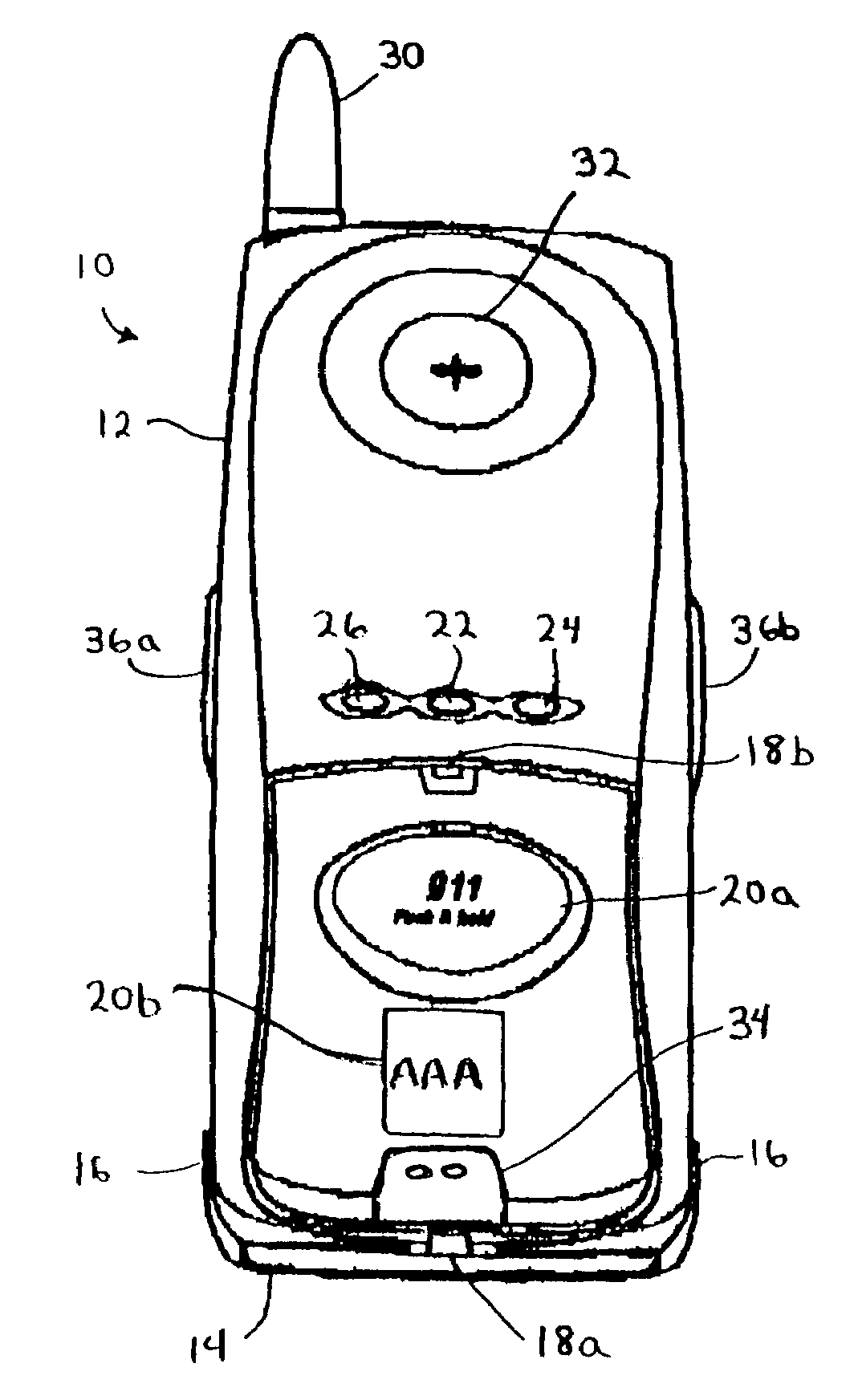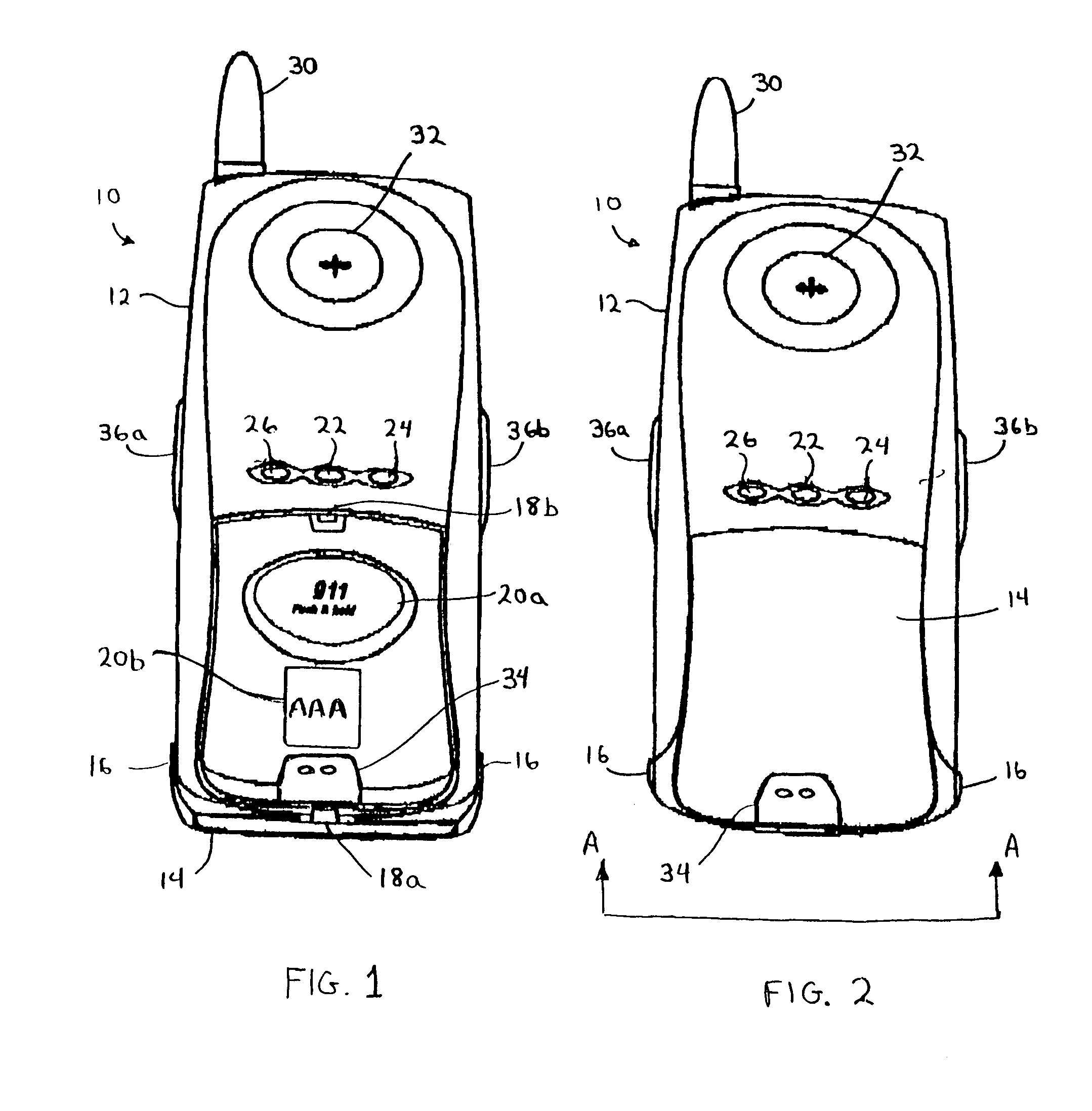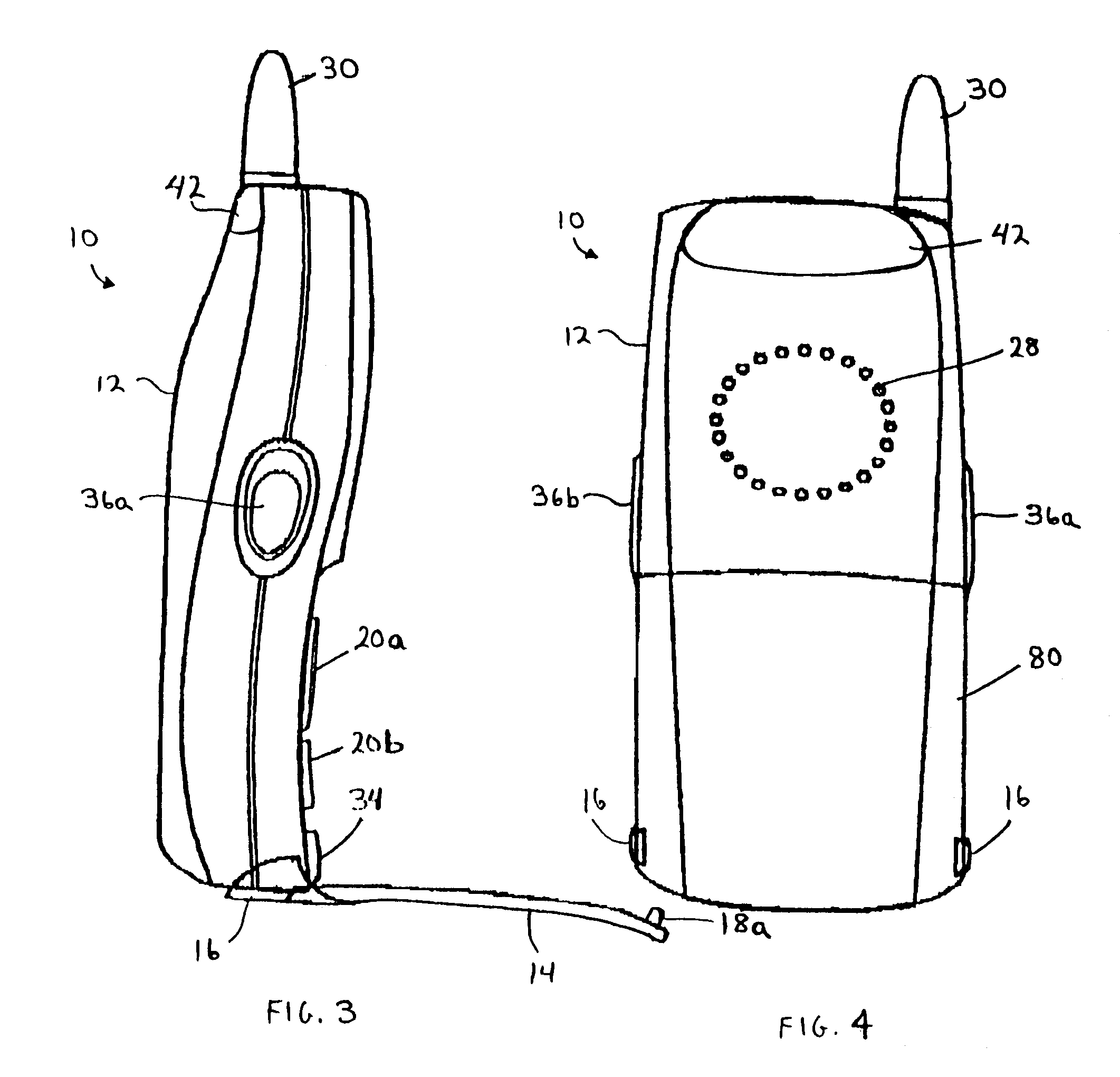Emergency phone with alternate number calling capability
a technology of alternate number and emergency phone, applied in the field of cellular telephones, can solve the problem of becoming much more difficult when it must be accomplished, and achieve the effect of facilitating communication, facilitating communication with the second emergency response service, and facilitating communication
- Summary
- Abstract
- Description
- Claims
- Application Information
AI Technical Summary
Benefits of technology
Problems solved by technology
Method used
Image
Examples
Embodiment Construction
[0024]Referring generally to FIGS. 1–5, a preferred embodiment of an emergency cellular telephone 10 for summoning help in an emergency is shown. The internal components of the phone 10 are contained within a rigid housing 12. The rigid housing 12 is preferably constructed of a durable material, such as polycarbonate, that will withstand being continuously carried in an individuals pocket or purse. Preferably, a protective cover 14 is movably attached at one edge to the rigid housing 12 by a pair of hinges 16. At the opposite edge of the cover 14 is a latch tab 18a that engages a latch pin 18b on the housing when the cover 14 is in the closed position. Preferably, the cover 14 may be opened by applying a gentle pulling force to the cover 14 to disengage the latch pin 18b from the latch tab 18a.
[0025]When the cover 14 is opened, as depicted in FIGS. 1 and 3, two large activation buttons 20a and 20b, are revealed. The button 20a is referred to herein as a first activation button or a...
PUM
 Login to View More
Login to View More Abstract
Description
Claims
Application Information
 Login to View More
Login to View More - R&D
- Intellectual Property
- Life Sciences
- Materials
- Tech Scout
- Unparalleled Data Quality
- Higher Quality Content
- 60% Fewer Hallucinations
Browse by: Latest US Patents, China's latest patents, Technical Efficacy Thesaurus, Application Domain, Technology Topic, Popular Technical Reports.
© 2025 PatSnap. All rights reserved.Legal|Privacy policy|Modern Slavery Act Transparency Statement|Sitemap|About US| Contact US: help@patsnap.com



